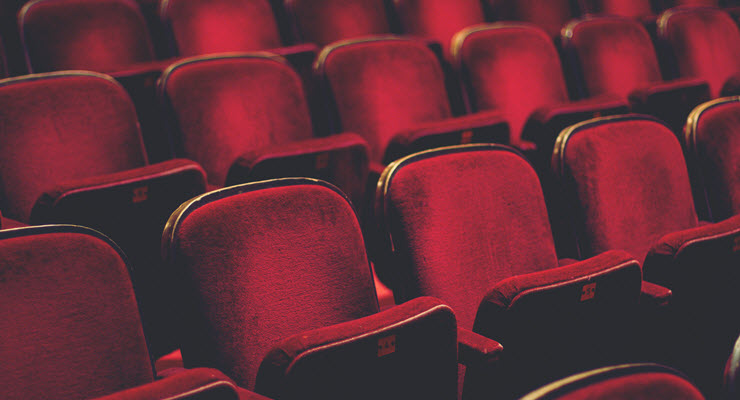
Over the weekend, Bill Shorten announced his big plan for the arts: a $37.5 million increase to the Australia Council, $8 million to a new First Nations theatre company, and an extra $60 million to the ABC and SBS (on top of reversing $83.7 million of the Coalition’s cuts). It represents a significant reprieve for Australia’s battered cultural sector.
“For me, arts policy isn’t an add-on,” said Shorten at The Espy, St Kilda’s famous rock venue. “It’s not something that you do as an afterthought or as a footnote to other matters.”
As an arts worker, dismayed by six years of contemptuous disregard from Canberra, I found Shorten’s Keating-esque rhetoric on the centrality of the arts to our national identity nearly as important as the extra funding. But let’s be frank: the arts, for most people, are a footnote in their political calculus. That’s why Labor spruiked arts investment with their candidates for the affluent inner-Melbourne seats of Higgins and Macnamara but stick to bread-and-butter issues pretty much everywhere else.
It would be easy to blame this on six years of antagonism from philistine conservatives. The harder task for the sector is confronting why, when devastating cuts were handed down, so few ordinary Australians rushed to their aid, and why few will be roused by Shorten’s cultural vision.
Arts and apathy
The most recent National Arts Participation Survey found that support for public arts funding has dropped by almost 20% since 2009, while perceptions that the arts are “elitist” and “pretentious” rose by 13%. This almost certainly emboldened Coalition ministers like George Brandis and Mitch Fifield to pursue cuts.
After the global financial crisis, support for the arts fell as economic anxiety rose. Disaffected voters often regard the arts as positive but ultimately a lower-order priority which could detract funding from essential services they rely on, such as schools and hospitals. Perceptions of elitism followed, with many voters seeing the arts as a lavish nicety for the wealthy.
But it’s worth considering what these voters think “the arts” are. Most often this is constrained to opera, ballet and classical music. Survey participants were often “delighted” to discover they participate in the arts by reading books, watching films and attending concerts, just like 98% of Australians.
So was the Coalition’s artistic purge ultimately permitted by a misunderstanding?
The ‘cultural elite’ v ‘the people’
Not entirely. While “the arts” are far broader than most people think, Australian arts funding is too often directed to the usual suspects: opera, ballet and classical music. As arts writer Ben Eltham noted, “the sorts of culture Australians engage with are not, by and large, the things that the Australia Council supports”. More than 60% of the Australia Council’s funding goes to major performing arts groups like opera companies and orchestras which are attended by less than 20% of our population.
Of course, there is nothing wrong with “high art” forms. But if politicians and bureaucrats continue to value their preferred artworks over popular and emerging genres, it’s unsurprising that lower- and middle-class audiences who are often excluded from “high art” spaces, disengage and prioritise more proximal projects like their local roads and hospitals.
Labor spokesperson for the arts Tony Burke has promised to instruct the Australia Council to more “fairly distribute” funding “to allow a better balance” of mediums, recognising the extent to which current funding arrangements are skewed towards art forms traditionally favoured by elites. How proactively he tackles this in office remains to be seen.
Australians’ consistent support for our national broadcaster, despite persistent denigration by conservatives, shows voters are passionate about cultural investments where they perceive broad benefits. When content is evidently made for people other than fur coat and tweed jacket wearing donors, support won’t be so hard to elicit.
In fact, the most exciting recent idea for Australian cultural policy is The Australia Institute’s proposal to establish an “audience supported board member” for the ABC. Such reform would disrupt the corporate coterie of ex-mining and banking bosses currently directing our national broadcaster’s governance processes.
The idea of giving decision-making input to audience representatives is applicable to all Australian cultural institutions. We own these institutions, yet decisions are rarely made with public interests — let alone the interests of ordinary consumers — in heart.
Labor’s policies would restore the arts to pre-Abbott levels. Great. But moving forward, government and industry must address growing disaffection towards Australia’s cultural establishment and reorient it towards the public it serves.








The yoooog response on this article/subject gives a good indication of how most sane people think of the yartz wanker brigade.
Yes Prime Minister covered this best in a classic episode, pointing out that most arts funding subsidises tickets to ballet and opera for the “faux fur and tweed jacket” brigade, invariably well off punters.
Meanwhile the kids are voting with their feet attending music festivals in huge numbers, where they are then harassed by police and their sniffer dogs (80% + false identification by same). All the while a sane policy of drug testing at festivals is denigrated by the old and tired politicians, fearful that someone, somewhere, may be having a good time.
Then they are shutting them down by insisting on sending squads of police they don’t want and sending organisers a bill, plus having to pay exorbitant insurance costs.
The war on the young is muchly played out in the arts industry. That’s where the kids are.
Apart from that, arts money directed to free public events, including keeping museums and art galleries free, is money well worth spending. At least kids go there on school excursions if their parents never take them.